The Road to Deurali: Building a Future for People and Red Pandas
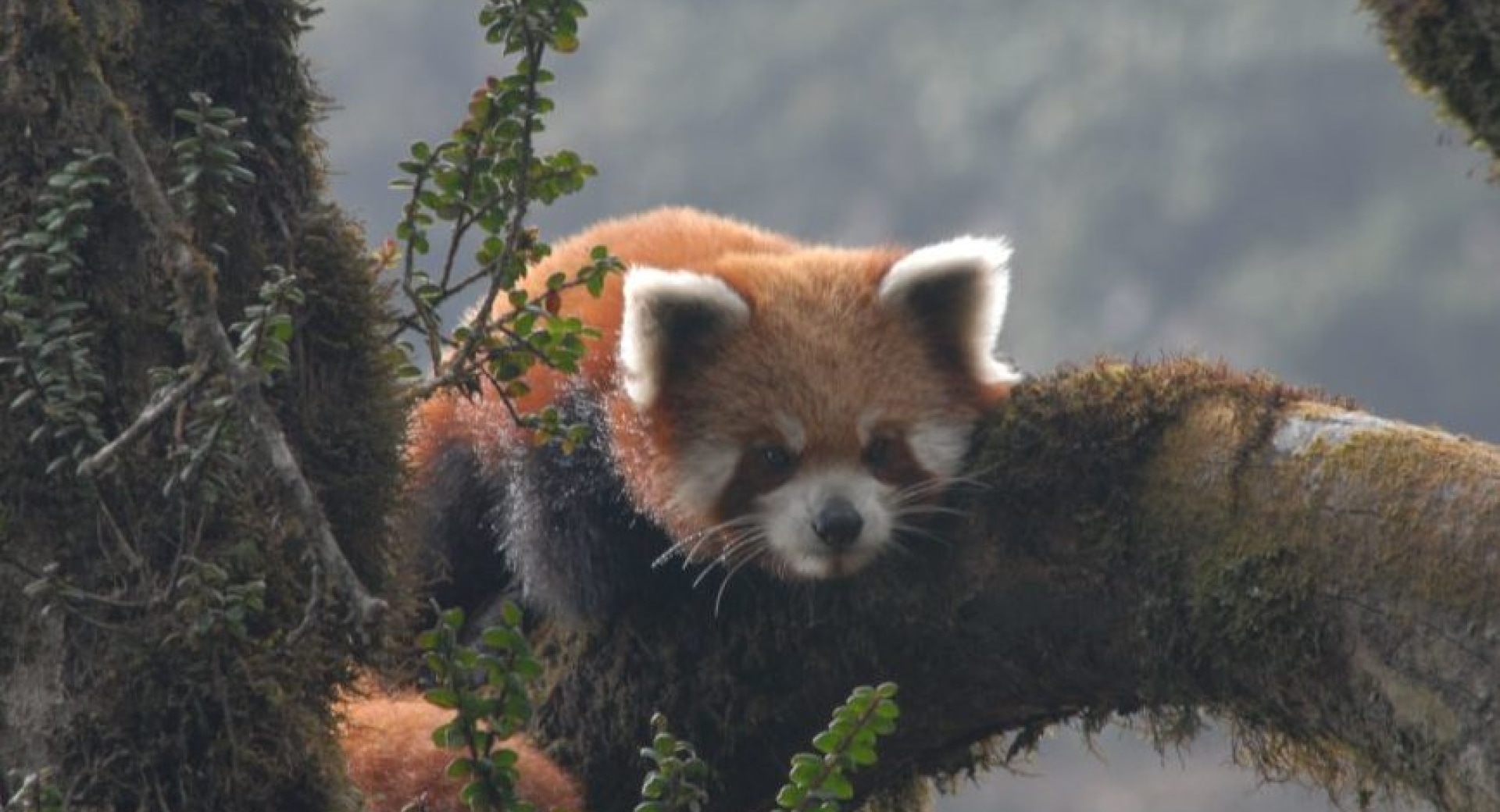
The people, stories and photos from the construction site of a center committed to alleviating poverty and sustainable living.
It’s monsoon season in Nepal and the weather is oscillating between heavy rainfall and beaming sunlight. Twenty-three-year-old Phurba Gurung is finishing up his chores before he starts his ten-kilometer commute to work from the district headquarters (Phungling Municipality-8) to Deurali, a mountain village in eastern Nepal’s Taplejung district.
As Gurung arrives at the worksite he hears harsh yet familiar sounds of construction — loud clangs and cracks; sawing, smashing and hammering; machines humming, and he hears voices. He heads towards the noise and an extraordinary structure of stone and wood rises among a backdrop of forest and mountain. He joins his workers in building something never seen before by anyone in the area; a place that is very significant for local people and for wildlife.
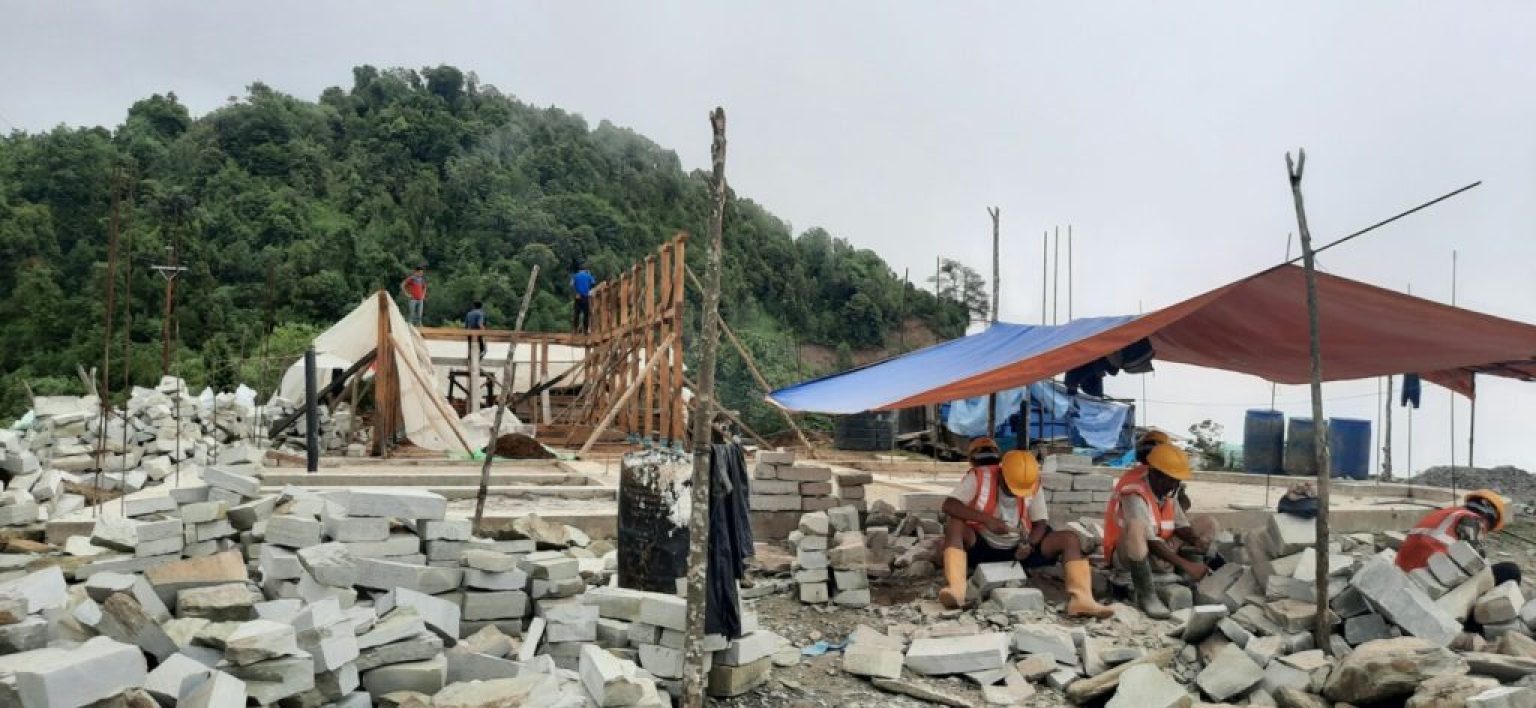 CCSL construction site in Deurali, Taplejung district, eastern Nepal. © RPN
CCSL construction site in Deurali, Taplejung district, eastern Nepal. © RPN
This is the Center for Conservation and Sustainable Living (CCSL), and once finished, will be an education and skill-building hub that improves the living standards and increases the annual income of at least 2,000 local families.
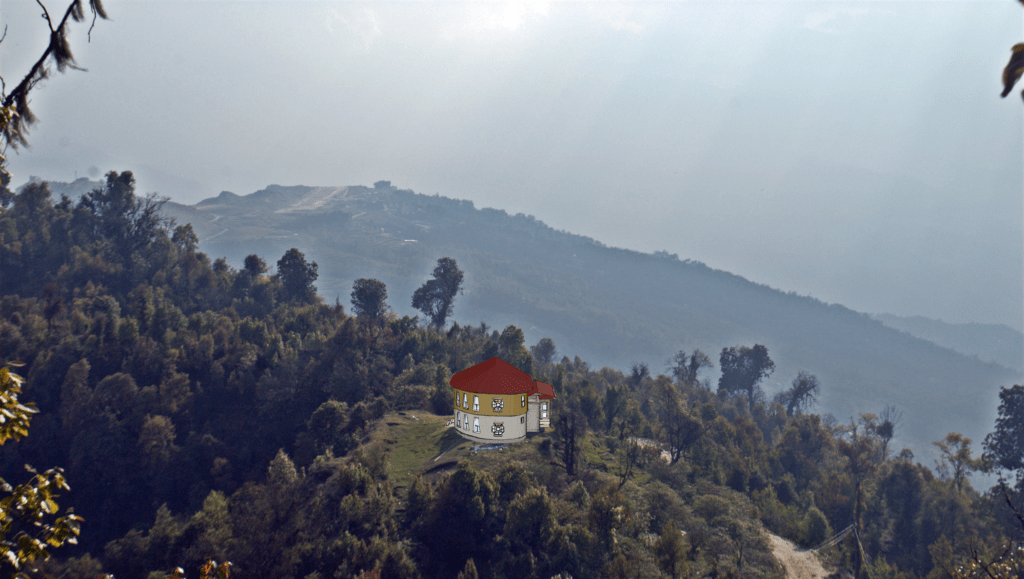 Illustration of CCSL on project site in Taplejung, eastern Nepal.
Illustration of CCSL on project site in Taplejung, eastern Nepal.
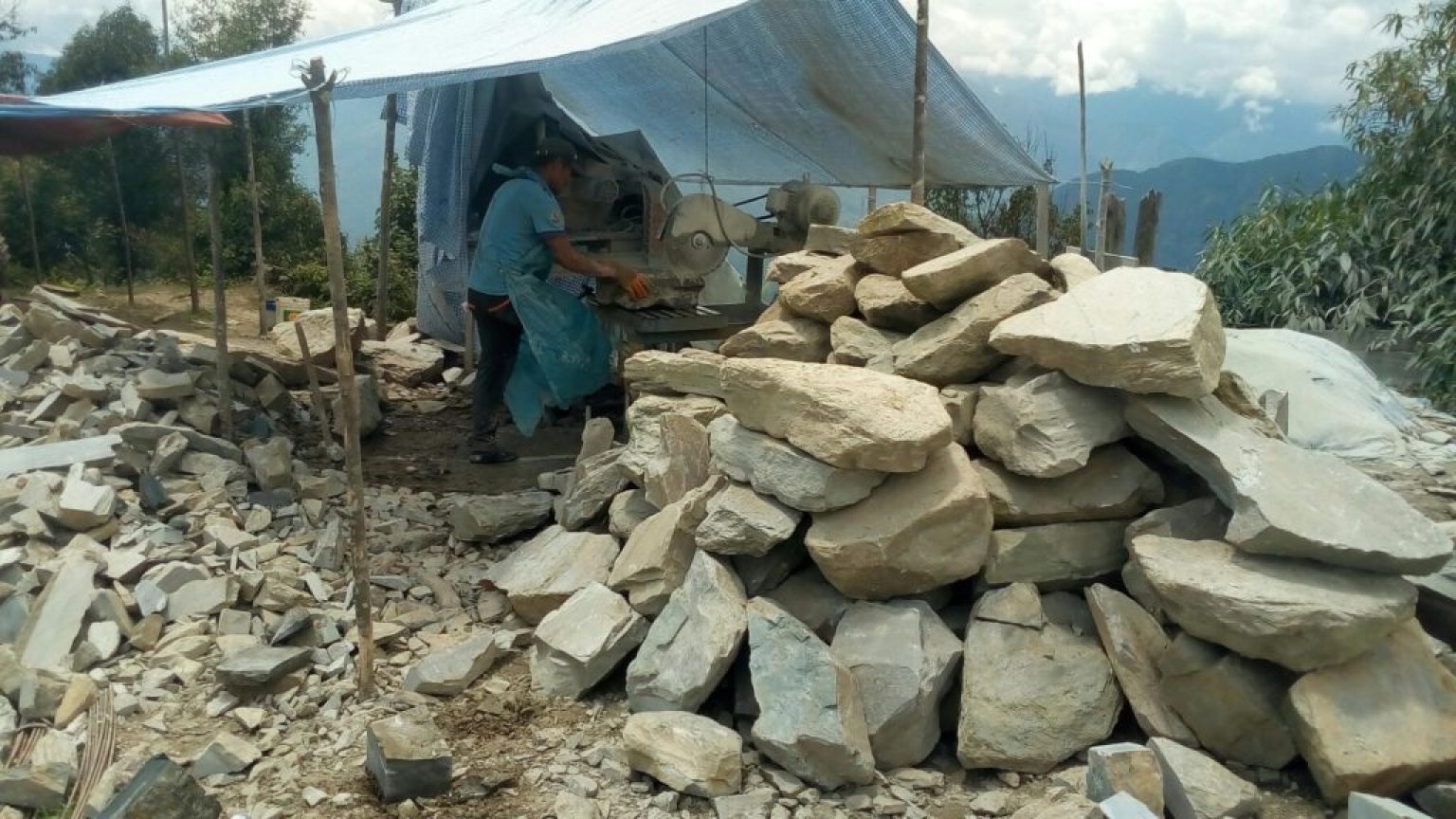 Pasang Sherpa cutting stones. © RPN
Pasang Sherpa cutting stones. © RPN
In Nepali, “Deurali” means the peak of a hill or pass where people usually take rest after their assent. But Gurung and his workers are not resting now. There are typically eight to ten workers at the CCSL site and one of them is a man who is busy cutting stones on a machine. His name is Pasang Sherpa and he is a 40-year-old local from the area. He shapes the stones as a tailor sews his clothes in a sewing machine. Sherpa developed this skill while living in Saudi Arabia for 9 years, “I prepare 70-75 stones daily. I do not feel any difficulties in this work as I frequently take breaks for food and water.”
Another member of the CCSL team is Gurung’s site supervisor, a civil engineer named Sagar Pokharel. He talks about how this is an eco-friendly design and many of the materials used in the building are local and from sustainable sources. For example, what appears to be a concrete structure is actually a mix of soil, ash, eggshell, cow dung, and straw molded to a strong, concrete-like substance. The timber also comes for a sustainable source.
The CCSL construction site located on the route to Pathibhara temple, on the Pathibhara peak, a famous Hindu shrine that attracts thousands of visitors every year from Nepal, India and other parts of the world who often follow this route to trek to Mount Kangchenjunga basecamp.
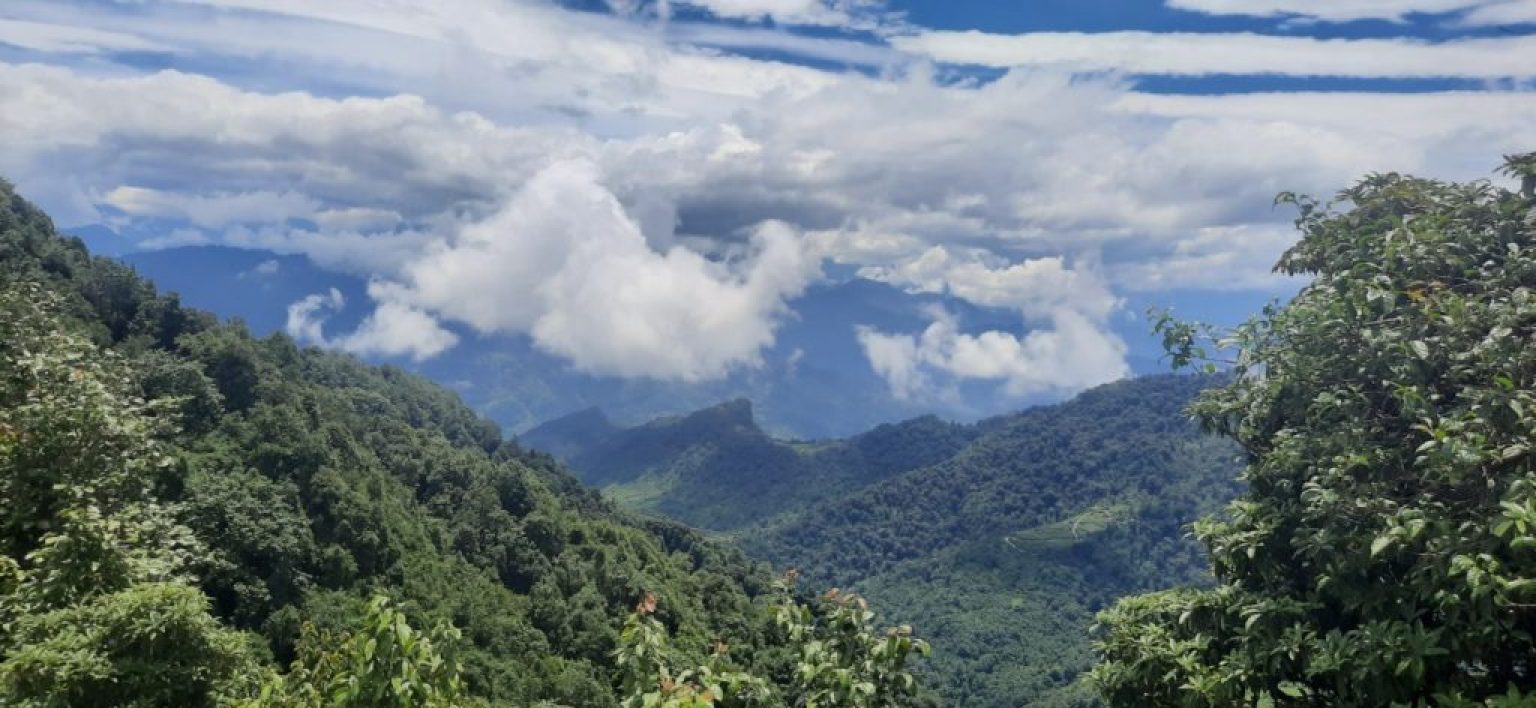 A view of red-panda habitat from CCSL site. © RPN
A view of red-panda habitat from CCSL site. © RPN
Along with the Pathibhara temple and Kangchenjunga, the CCSL will be a center of attraction in the area, especially for ecotourists. Visitors and tourists will be able to stop by the CCSL to learn about environmental conservation and enjoy organic food in the nearby homestays. They will see breathtaking views of the forested hills — these “hills” are over 3,600 meters high but are dwarfed by the spectacular Himalayas — in Deurali Bhitri Community Forest (CF) and Sayapatri CF, and the third tallest mountain in the world, Kangchenjunga at 8,586 meters.
Down in the forests below, RPN is working with Community Forest Users Groups (CFUGs) in sustainably managing their forests. One of our programs is Forest Conservation Nurseries (“RPN nursery” in map to the right) which help to generate jobs, increase local incomes and reduce pressure on forest resources by providing a sustainable source of non-timber forest products (NTFPs) and medicinal and aromatic plants (MAPs) for the local communities.
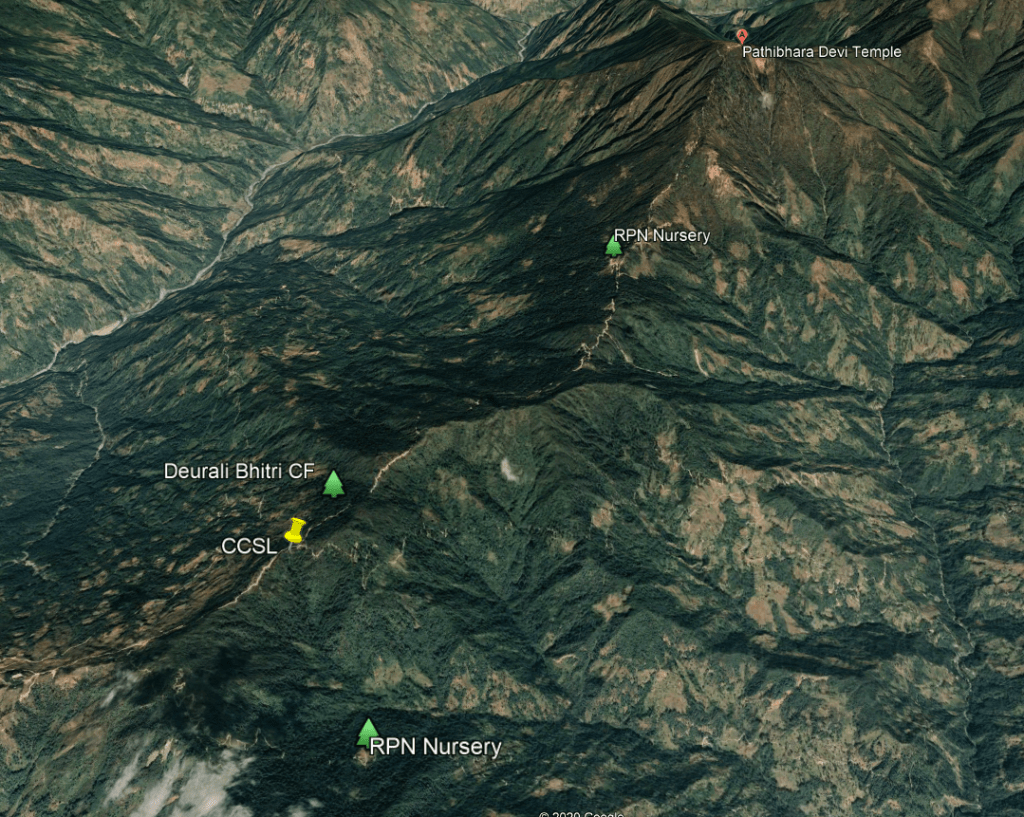 Map of the CCSL area. © RPN
Map of the CCSL area. © RPN
The stakeholders in the area are supportive of sustainable development and see the CCSL’s potential for cultivating environmental stewardship among the visitors and tourists. Pasang Rita Sherpa, the secretary of the Deurali Bhitri CFUG, said, “initially, forest and wildlife conservation was not easy. But as we prioritized educating locals about the link between wildlife conservation and sustainable income for local people, they became more engaged in protecting their forests.” The Deurali Bhitri CFUG have now conserved about 200 hectares of red panda habitat.
Another stakeholder — Bhim Bista, a tea house owner in Deurali, believes the CCSL will help his business and other local businesses flourish as it becomes a renowned ecotourism destination.
And the center’s impacts won’t just be local. The thousands of people who visit the CCSL will return home with this message: Wildlife conservation and sustainable livelihoods are interdependent; thriving biodiversity can mean thriving communities and vice versa. The CCSL will also educate and demonstrate how to achieve community-based conservation.
In 2021, the road to Deurali will have a new place to visit that is not only an education and resource center, but a monument of community-based conservation where people like Phurba Gurung have opportunities for a better life. “Of all the work I’ve done before, this is special to me. We are very motivated to see the final structure of the CCSL.”
This important center that will help create a sustainable future for people and pandas in eastern Nepal is made possible by the support and generosity of is made Nordens Ark and Svenska Postkodlotteriet.
Learn more about the CCSL and check out additional construction photos below!
